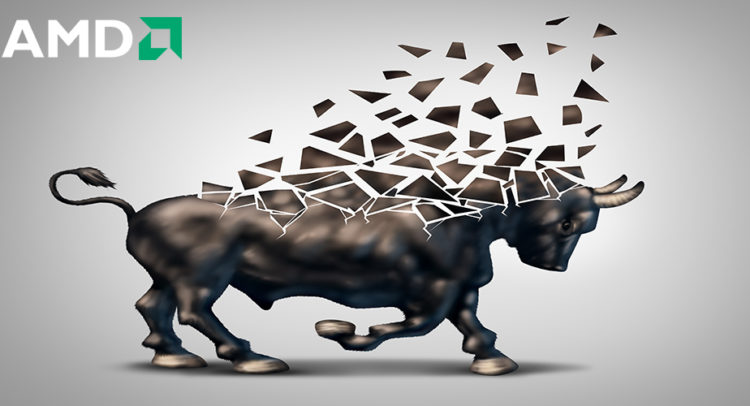Since the beginning of July, Advanced Micro Devices (AMD) stock has been on fire. The semiconductor powerhouse announced impressive earnings that exceeded the expectations of many of the most optimistic analysts. In turn, AMD has soared 88% year-to-date.
However, Northland analyst Gus Richard has recognized a growing number of adverse trends likely to hurt AMD’s stock price and profitability extending through CY21. Specifically, the analyst believes that factors such as slowing data center demand, shifting ARM server utilization, and longtime reliance on Intel will haunt AMD in ensuing quarters.
The clearest factor indicating a decline for AMD, according to Richard, is the data center spending slowdown occurring across many sectors. This trend is wreaking arguably the most havoc in semiconductors, where enterprise spending is anticipated to drop significantly. In addition, government and cloud spending have already begun to decelerate, and it is beginning to seem highly unlikely that Q2 revenues can persist throughout 2H20.
Even within the chip sector, itself, AMD does not appear to be in a favorable position. Richard believes the company’s x86 hardware is being increasingly replaced by advanced RISC machine (ARM) servers across most tech platforms, a trend likely to continue throughout the decade. Although some partnerships have allowed certain “containerized applications to run on ARM processors developed on x86 hardware,” abandoning the x86 is the direction in which the industry at-large is heading. While AMD has the license to manufacture x86 processors, it does not own its proprietary technology; Intel (INTC) does.
Intel, although struggling with problems of its own, is still treading water. Richard notes that he would not be surprised to see “samples of 7nm CPUs from INTC manufactured at TSMC by the end of next year.” TSMC, Taiwan Semiconductor Manufacturing Company, would replace AMD as Intel’s most valuable partner. Although this process would take a considerable period of time to solidify and is not yet set-and-stone, AMD shareholders must be aware of the possibility of this negative catalyst moving forward.
Approaching the back half of 2020, AMD appears to have an evident ceiling on both its short- and long-term profitability, according to the analyst. Although AMD has demonstrated sufficient new server/cloud product momentum, the company is trading at its highest P/S ratio in 13 years (~12) and is facing blatant headwinds. Couple these factors with the ongoing forest fires evacuating Silicon Valley and an ever uncertain COVID-19 economy, and it is very difficult to see much upside for AMD.
For these reasons, Richard downgraded AMD from Outperform (i.e. Buy) to Market Perform (i.e. Hold), while keeping his price target at $80. This figure implies a 7% downside from current levels. (To watch Richard’s track record, click here)
Overall, TipRanks points to early analyst sentiment split between confidence and caution on AMD shares. Out of 26 analysts polled in the last 3 months, 13 rate the stock a Buy, while 12 say Hold and one recommends Sell. Notably, the consensus average price target stands at $81.30, marking a 6% downside potential from current levels. (See AMD stock analysis on TipRanks)
To find good ideas for stocks trading at attractive valuations, visit TipRanks’ Best Stocks to Buy, a newly launched tool that unites all of TipRanks’ equity insights.
Disclaimer: The opinions expressed in this article are solely those of the featured analyst. The content is intended to be used for informational purposes only. It is very important to do your own analysis before making any investment.


